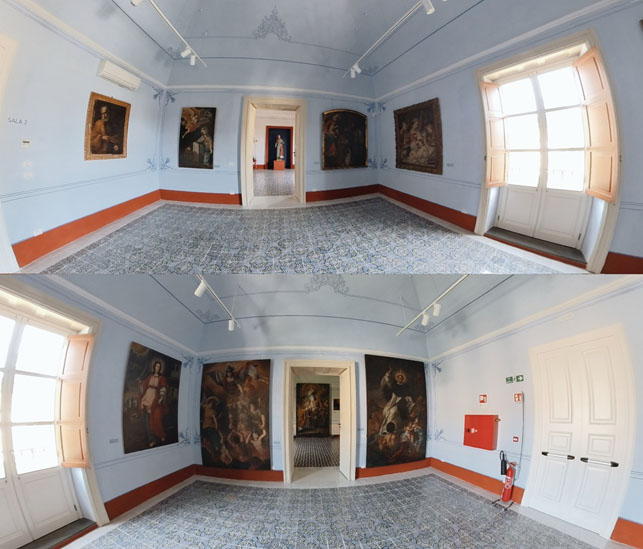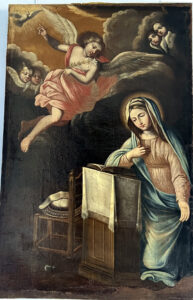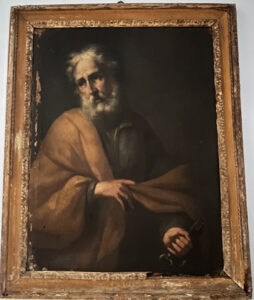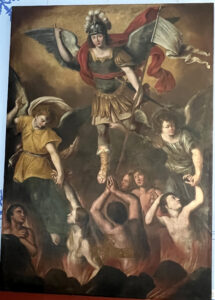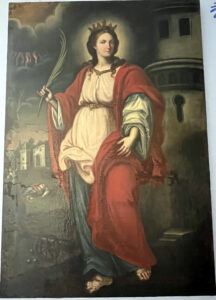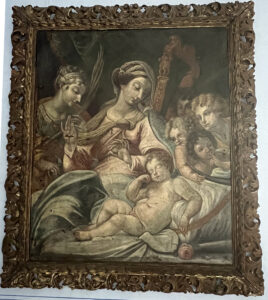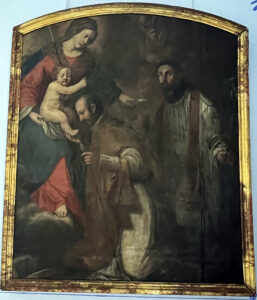Room II
Room II is dedicated to Monsignor Girolamo Ventimiglia, of the Clerics Regular, bishop of Lipari from 1694 to 1709, a highly cultured man and orator of great renown, called in 1700 to preach to the Cardinals gathered in Conclave for the election of the new Pope. Works from the 17th and early 18th century are exhibited in the room.
The demographic and urban growth that had already begun in Lipari in the second half of the 16th century continued in the 17th and 18th centuries, and with it the construction and decorative fervour of religious buildings, to which the presence of religious orders, including the Franciscans and Jesuits, also contributed. During this period, devotion to the Virgin Mary also took on renewed impetus, witnessed, as of 1681, by the presence on the island of twenty-three, out of thirty-eight, churches and chapels dedicated to the Marian cult.
One of the most interesting initiatives in the second half of the 17th century was the opening of a ‘grammar school’, free of charge and accessible both to clerics, who wanted to prepare for the priesthood, and to poor boys who wished to acquire a basic education. In this school, the first public education in the Aeolian Islands, ‘grammar and the rudiments of the faith’ were taught. In addition, two libraries were opened in the same years, subsidised by the bishop.
The bishops and confraternities also carried out major restorations from the end of the 17th century, a trend that continued throughout the rest of the 18th century, as evidenced by the frescoes in the Cathedral, with the exception of the complicated interlude of the Liparitan Controversy in which there was a lull. The Aeolian Islands also became a cultural tourism destination for European visitors during this period, such as the Italian presbyter and biologist Lazzaro Spallanzani.
The room contains seven oils on canvas belonging to the local figurative culture of the 17th and 18th centuries. These are school works, for the most part not attributable to a specific author and largely influenced by Sicilian stylistics, with the exception of a copy by Carlo Maratta, a painter from the Marche who worked in Rome in the second half of the 17th century, and a canvas attributed to Guglielmo Borremans, a Flemish painter who lived and worked in Naples and Sicily.
Among the most significant works are
a Madonna with Sleeping Child, St. Catherine and Musician Angels, oil on canvas by an unknown author active between the 17th and 18th centuries, which reproduces, with some minor variations, a painting by Carlo Maratta (1625-1713), a central figure of Roman and Italian painting in the second half of the 17th century, celebrated as one of the greatest painters of his period;
a Saint Barbara, by an unknown artist from the early 18th century, attributable to the Messina school and commissioned by the artillerymen of Lipari Castle for the altar dedicated to their patron saint in the renovated Chiesa delle Grazie church;
an Apotheosis of Saint Vincent Ferreri, attributed to the Flemish artist Guglielmo Borremans, who was born in Antwerp in 1672 and died in 1744. This is a painting of excellent quality, painted in a lively language typical of northern Europe and rather unusual in Sicily, commissioned for the altar of the Dominican saint, nicknamed the Angel of the Apocalypse, in Lipari Cathedral.
Other works present are:
a Madonna and Child with Saints Ignatius and Francis Xavier, by an unknown author from the second half of the 17th century. This is an oil on canvas applied to panel, once placed – before the rediscovery of the Norman Benedictine cloister – in the chapel of the Baptistery;
a St. Michael the Archangel and Purgatory Souls, oil on canvas by an unknown 18th century Sicilian artist, from the sacristy of Lipari Cathedral.
an Annunciation, by an unknown artist of the Messina school, which can be dated between the 17th and 18th centuries. This oil on canvas, which is stylistically fragmentary due to a remake in the upper part, comes from the Church of Madonna delle Grazie on Lipari.

